I have to insert into a table some records based on multiple records from 2 different tables..
Tables:
Target: player_list_items
Source1: list_items
Source2: map_details
A player is supposed to play a list which contains a list of items; A list needs to be played over a map.
The map contains placeholders with their certain X and Y positions and I need to place list_items behind those placeholders. for that I have created the target table that will contain the list_items positioned randomly behind the placeholders.
Below is the query in which I was able to dump the list_items for a user into the target table but, now the problem is that how to get X and Y positions randomly for each list_items from the source2 table.
INSERT INTO player_list_items
(player_list_list_id, player_list_player_id, player_list_item_id, player_list_item_cellX, player_list_item_cellY)
SELECT li.list_item_list_id, 584488596, li.list_item_item_id, 2, 5
FROM list_items li
WHERE li.list_item_list_id = 2
either an insert with multiple selects or even another query {update} after this would work for me because this would run only once for a user per list.
Each list contains multiple items so the above query returns multiple items and its working fine, what needs to be considered is that the map_details table also contains multiple place holders and they would be more than the # of list_items for sure.
The required query is supposed to get all positions X and Y from the map_details table and assign then randomly to each individual item, positions for every item must be unique.
I have seen examples of multiple selects for insert but they are for single row insertion and my problem is multiple rows from multiple tables and random too.
I have a Stored Procedure for this case because it has lots of other stuff thats working fine so, if anyone here want to give answer using SP that would be useful and not a problem for me to use.
Hope the above stuff is making sense and clarify my point.

UPDATE
My 2nd query:
INSERT INTO player_list_items (player_list_list_id, player_list_player_id, player_list_item_id, player_list_item_cellX, player_list_item_cellY)
SELECT list_item_list_id, 584488596, list_item_item_id, game_map_details.cellX, game_map_details.cellY
FROM list_items
JOIN (SELECT * FROM game_map_details WHERE map_id = 1 ORDER BY RAND()) AS game_map_details
WHERE list_item_list_id = 2
GROUP BY list_item_item_id
This do adds the data from the map_details table but the data is not random, in fact its inserting only 1 pair of record for all 4 records from list_items table

Regards